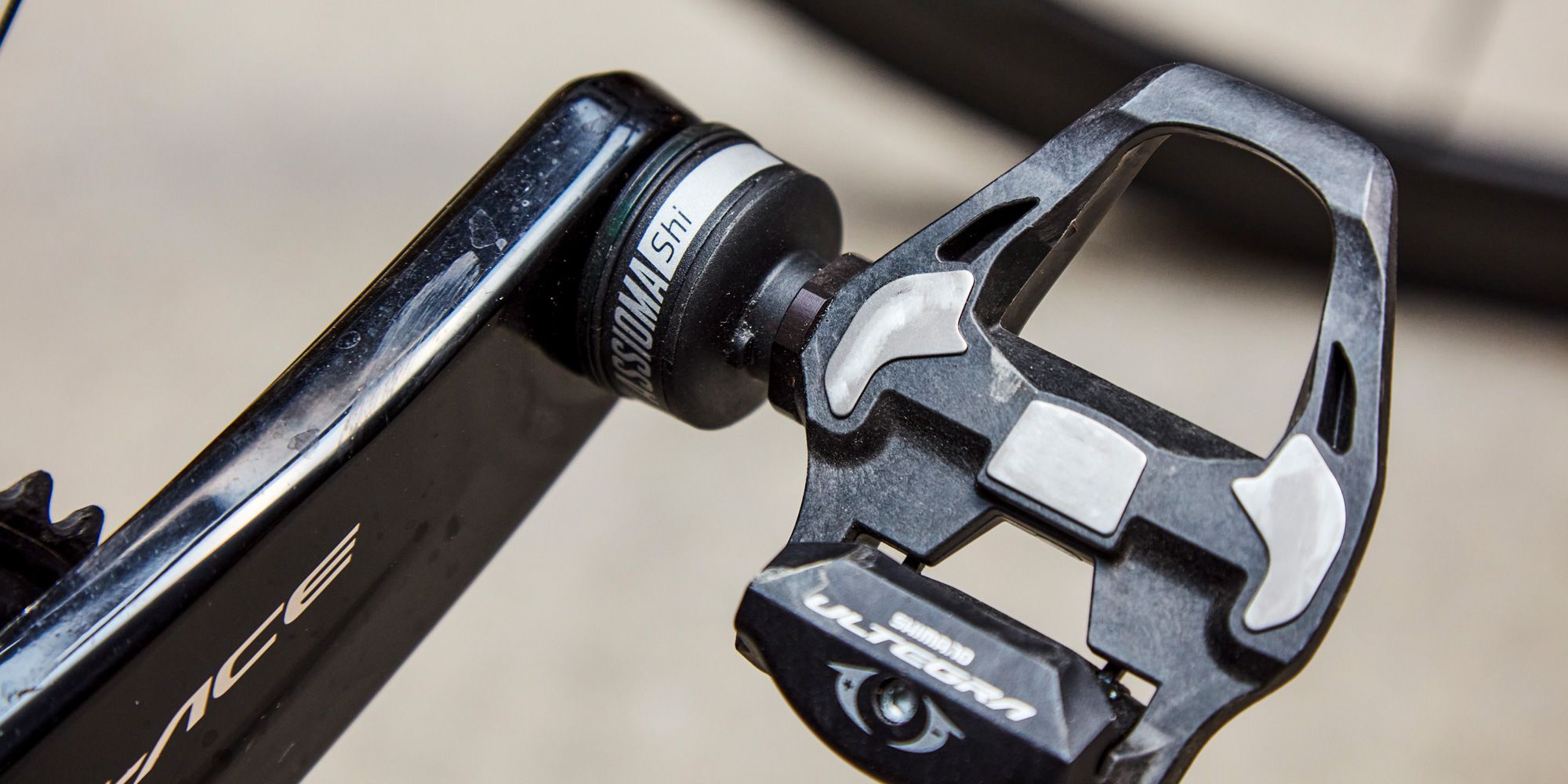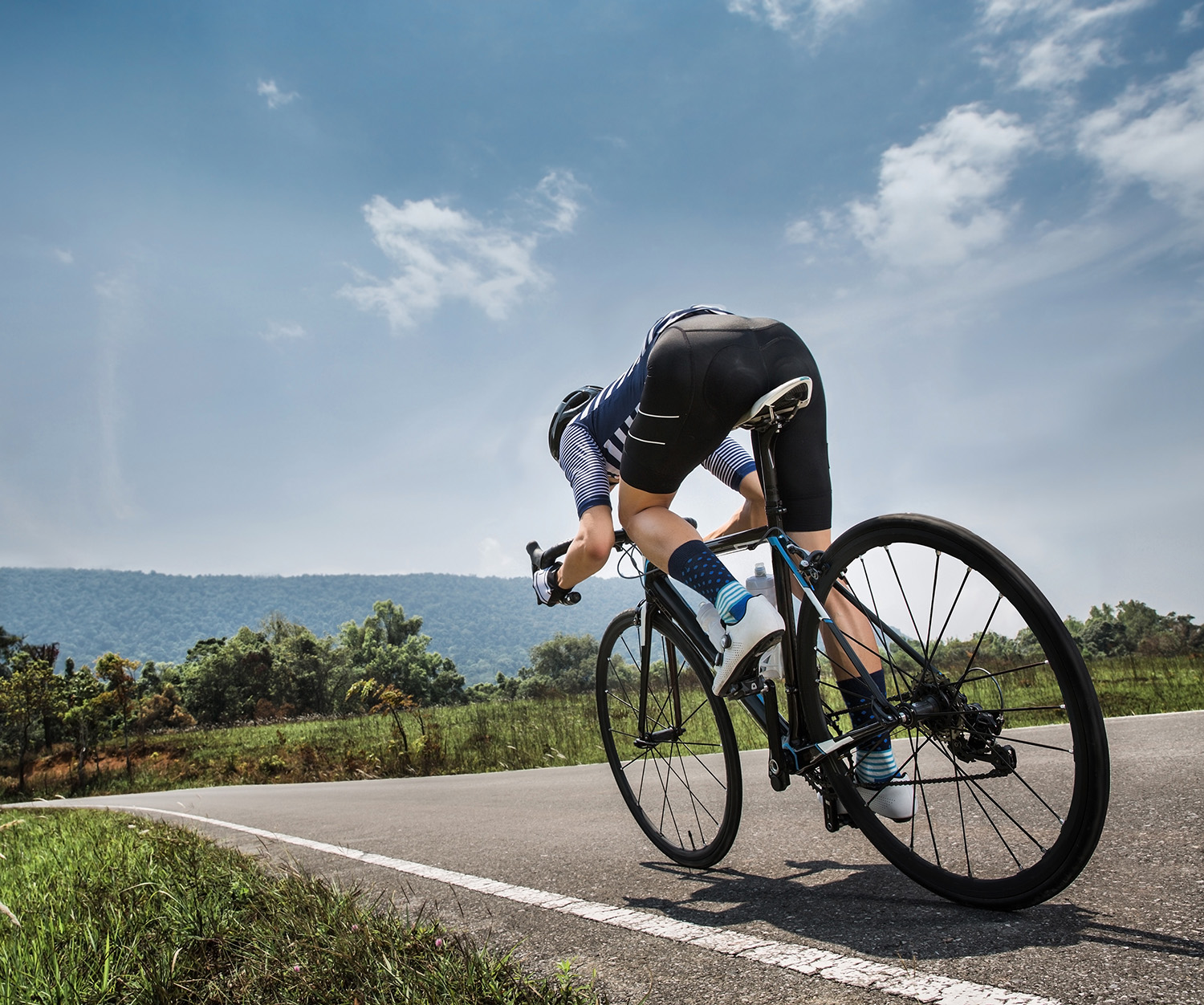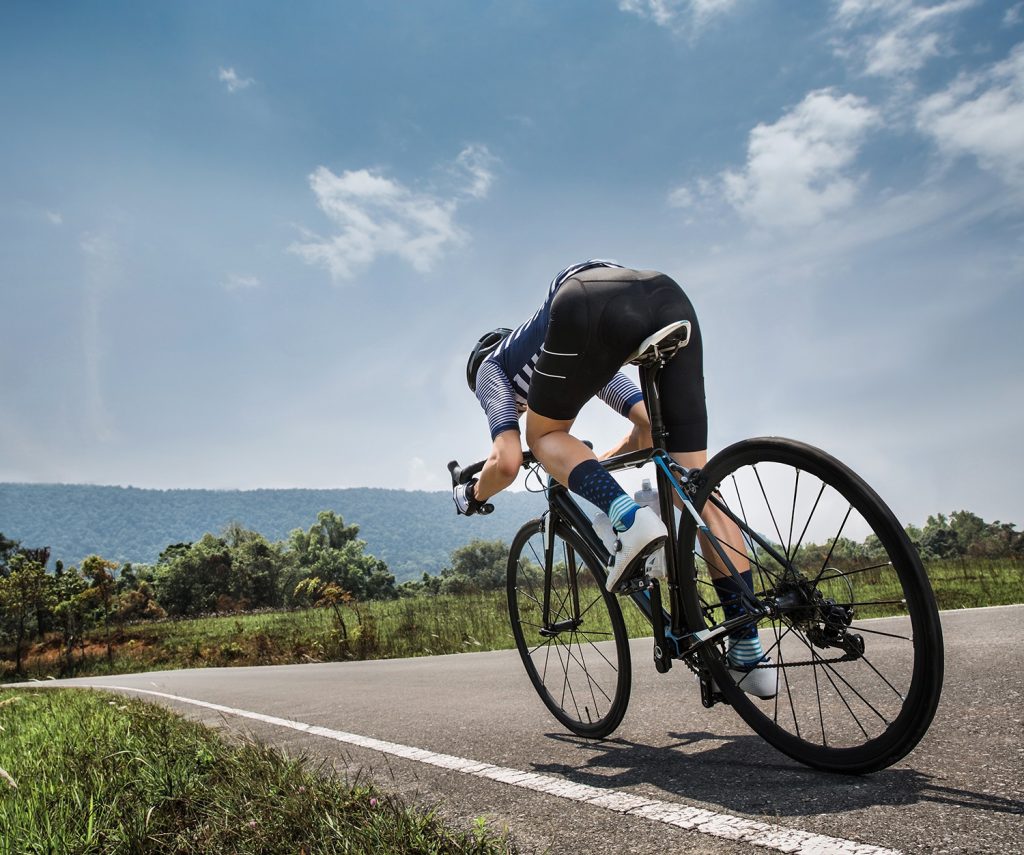Tailoring Caloric Intake to Workload
In order to be able to tailor caloric intake to the cycling workload, it is essential to pay close attention to the overall energy consumption. Power meters are an essential tool for cyclists to help them maneuver the workload and make adequate nutritional decisions. The first step of tailoring nutrition to cycling depends on calculating the total energy expenditure made during the rides. In other terms, this step necessitated analyzing the power meter data and identifying the average watts produced during the ride. If a cyclist has managed to produce 250 watts on average during a ride that lasted two hours in total, the total energy expenditure can be estimated through the following formula that converts watts to kilocalories burned per hour: Energy = Power × Time × 3.6, where Time is equivalent to 2 hours, and Power is already given.
It is estimated that the efficiency of cycling is equal to 24%. It signifies that for every 100 watts produced, 86 kilocalories is burned. Hence, the results are the following.
Adjusting Caloric Intake Pre-ride
Prior to a ride, it is essential to consume a number of calories that a cyclist is expected to burn during the effort. It is recommended that the meal prior to cycling consists of a substantial amount of carbohydrates that help to increase the glycogen reserves in the muscles and the liver. Experienced nutritionists suggest consuming between 4 and 6 gr of carbohydrates per one kg of weight. It should be consumes around 3-4 hours before cycling, and it should not be rich in fat and fiber to ensure that it is not difficult for the stomach to digest before cycling.
Nutrition During Rides
Nutritional proportions also need to be consumed during a ride. If it is long, it is vital to sustain one’s energy during the effort. Experts recommend that on average, 30-60 gr of carbohydrates should be consumed in an hour. If a ride lasts more than 2.5 hours, the proper nutrition’s amount consumed can be around 90 gr per one hour. Different types of food can be efficient for it, such as energy bars, gels, and carbohydrate-rich drinks. For example, if one needs to consume 25 gr of carbohydrates consumed in a gel packet, his or her carbohydrate-electrolyte solution can be providing a number of 20 gr per 500 ml. When a gel packet is consumed every 30 minutes, a bottle of the solution can be consumed during 30 minutes, as well.
Post-ride Recovery Nutrition
After the ride, it is vital to consume a number of carbohydrates that a cyclist’s body is expected to need after the workout. If he or she consumes between 1 and 1.2 gr per one kg of body weight in 30 minutes immediately after the ride, it will be enough to restore glycogen reserves most efficiently. At the same time, adding some protein will help to rebuild the sharp muscles. A proper proportion is 3:1 or even 4:1. Naturally, in order to understand how this strategy works within a real-life setting, it is vital to organize a brief example of a professional rider. If a rider managed to burn 2000 kcal during a tough training session according to his power meter, and he weighed 70 kg in total, it means that he would need to consume 240 gr of carbohydrates immediately after the training in order to recover glycogen reserves most efficiently. To realize this goal, he would consume a recovery shake and a hearty meal with proper quantities of carbohydrates and proteins.

Optimizing Macronutrient Ratios for Recovery
Recovering through adjusting macronutrient ratios post-exercise critically accelerates the process, especially after an intensive cycling session powered by precise, graphable, and useable data by a power meter. Gradual adaptation helps restore energy and muscle tissues effectively.
Nutritional Components Contribution to Recovery in Cycling
Carbohydrates. The main source of fuel for high-intensity cycling, fast-digestible and absorbable nutrients allow for prompt regeneration of glycogen stores lost because of the exercise, while they also increase insulin, which drives nutrient uptake. Adjust the intake for about 1.2 to 1.5 grams of carbohydrates per kilogram of body weight after a ride to ensure optimal absorption. For a 70kg cyclist, the requirement should be around 84 to 105 g of carbohydrates. Suitable sources include rice, pasta, fruits, or specific dietary supplements and powders for better absorption.
Protein. High-quality protein helps repair damaged muscle tissues and ensure optimal recovery and growth. Adjust the intake to around 0.3 g of protein per kilogram of body weight, meaning 21g for a 70kg cyclist. Proper sources include whey powder, eggs, or a lean piece of chicken breast.
Fats. Although less important during the recovery process, they need to be included in the meal. Include sources rich in omega-3s, such as flax seeds or fish for better control of inflammation and other biological processes. Avoid excess amounts of unhealthy fats.
Real-World Example
Consider an individual with a 70kg weight who went on a 4 hour, 3000 kcal long ride fueled with multiple intense efforts. After stopping, the cyclist should consume a simple carbohydrate digestible recovery shake with 50g of the substance and a proportional 25 g of protein. Next, an optimal balance of a decent meal should include 80g of carbohydrates, 30g of protein, and moderate amounts of fats in the coming two hours.
Hydration Needs Based on Exertion Levels
Proper hydration is central to cycling performance, particularly if informed by power meter data. Since power meters show how intense the effort put into riding is, the levels of exertion can then be matched by the proper intake of fluids, raising the overall efficiency and recovery both during and after the ride.
Baseline Hydration Needs
The requirements for proper hydration depend on multiple factors, including but not limited to intensity, duration, and environment. The general suggestion is that 500 ml of water should be consumed per each hour spent on cycling. However, this should be interpreted with the adjustment to the exertion data from the power meter and one’s respective sweat rate.
Adjusting for the Exertion
In the case of high-intensity rides, when the data of the power meter consistently shows high wattage levels, the fluid loss may be higher due to the overall increased sweat rates. In other words, if there is a need to push through a high-intensity hour or if hot weather conditions are impacting the sweat rate, the intake may be slightly raised, reaching the levels of 700-1000 ml of water per each hour. The fluid intake should always be simultaneously accompanied by electrolytes; otherwise, even higher volumes may be detrimental as they will increase the likelihood of hyponatremia.
Practical Fluid Intake During Rides
During the ride, the fluid consumption should occur regularly, rather than in large quantities when the need to alleviate thirst occurs. A simple rule is to drink small amounts of a carbohydrate-electrolyte solution, ensuring that consumed every 10 to 15 minutes. The electrolyte balance and the consumed carbohydrate energies remain constant. As a practical example, the rider may consume 150-200 ml of 6% carbohydrate solution per hour, providing approximately 30 grams of carbohydrates and needed fluids. If suddenly the environment increases the temperature, another 250 ml will be consumed..accuracy of the input data, since the formulas may show the outputs that are significantly higher than the in-between of the input data. As long as the power data from the device used to measure the effort is trustworthy, the other conditions do not matter, with no possible exceptions.
Supplement Timing for Maximum Performance
Power meter data opens up opportunities to enhance cycling performance by strategically timing the supplements. When understood and applied, these insights can optimize energy levels, postpone fatigue and improve overall results.
Pre-ride supplementation
Cyclists should start their ride with optimal levels of the nutrients in their bodies. Raising the levels of carbohydrates and caffeine 30 to 60 minutes before the ride can enhance the quality of the subsequent physical performance. Carbs provide the necessary energy immediately available to the system, whereas caffeine increases concentration and reduce perceived effort. 200 to 300 mg of caffeine, which is generally to the content found in a single strong cup of coffee, together with 50 grams of fast-digesting carbohydrates, such as a banana or a carbohydrate drink, can constitute a deserving pre-ride meal.
During-ride supplementation
Although the duration of the ride depends on the purpose, meeting the body’s demand for energy and fluids are of paramount importance, especially during the high-intensity parts of the activity that can be defined by the power meter. Instead of struggling with heavy food, cyclists should aim at taking in 30 to 60 grams of carbohydrates every 30 to 45 minutes of the ride. Compounds with the said content are widespread in the form of gels, chews or drinks. As for electrolytes, it should be incorporated into the hydration plan as they help to maintain the proper balance of sodium, reducing the risks of muscle cramps. For a high tour, when the cyclist pedals intensely for two hours, 25 grams of carbohydrates can be supplied by an energy gel every 30 minutes together with a bottle of sports drinks for additional 20 grams of carbs and electrolytes.
Post-ride supplementation
What concerns the post-ride nutrition, the main task is to ensure proper recovery. In accordance with Majumdar, within an hour of three from the end of the ride, the cyclist has to take in a proper composition of carbohydrates and protein in the 3:1 or 4:1 ratio. Such mixing will serve replenishment of the glycogen content in the muscles and the repairs of the muscle tissue. In a real-life example, it could be done via a recovery shake of 60 grams of carbohydrates and 20 grams of caseine. In two hours, the athlete would eat a turkey sandwich and an orange-tasking fruit.
Seasonal Adjustments for Base vs. Peak Training
Nutrition strategies for cycling must be adapted to different phases of training, especially when transitioning from base training to peak training. In this regard, power meter data can be used to inform effective nutritional needs. In the base training period, the focus is on enhancing the cyclist’s endurance and aerobic capacity. Rides are generally long but not particularly intense, indicating that the needs are different compared to peak training. They are still significant, as a cyclist spends 2000 kcal on a 4-hour long moderately intense ride at 150 watts average. In this case, the entire caloric intake should be spread across 60 grams of carbohydrates per hour. They can be sourced from common whole foods as a banana, an energy bar, and an undersweetened sports drink a bottle of which can contain 50 grams of carbs.

The timing and frequency of consumption can be outlined in a following example:
- Pre-Ride: 1-2 hours before the departure, eat a meal with 100 grams of carbs and 20 grams of protein. An example could be a bowl of oatmeal with fruit and a full-fat yogurt.
- During Ride: Take a combination of solid and liquid carbs totaling 60 grams per hour. A single option here includes one energy bar and a bottle of a sports drink.
- Post-Ride: Wait no more than 30 minutes to have a meal that contains 1.2 grams of carbs per a kilogram of weight and 0.3 grams of protein, such as a recovery shake and a turkey and cheese sandwich.
Peak training is generally focused on high-intensity low-duration rides to increase power and speed. Higher intensity requires different nutritional approaches to support recovery and increased caloric demands. Data from the power meter suggests higher caloric burns from the higher average wattage and the presence of intervals and sprints.
Consider a 2-hour session with multiple high-intensity intervals. If the cyclist is averaging 250 watts and burning around 1800 kcal, the carbohydrate requirement should be adjusted accordingly. The pre-ride nutrition might include the intake of 50 grams of fast-digesting carbohydrates and 200 mg of caffeine minutes before the session . A banana and a cup of coffee might be a suitable option.
During the ride, the cyclist might take 30 grams of carbohydrates every minutes in the form of gels and isotonic drinks at a total of 120mL per hour . Immediately post-ride, the athlete might consume a recovery shake containing 60 grams of carbohydrates and 20 grams of protein followed by a well-balanced meal in the course of the following hour . As a delayed example, consider how the nutrition might change as the cyclist is transitioning from the base to the peak training.
Real-world example
During the base training period, the cyclist used to obtain a steady carbohydrate intake supporting long moderate rides. The power meter data for the same rides indicates the increased intensity and explains importance of nutrition adjustment after transition to peak training. In the base phase, the cyclist’s weekly long ride might include:
- Pre-ride: whole grain cereal with fruit and milk grams of carbs, grams of protein.
- Coon-ride: three energy bars and two bottles of sports drink total of grams of carbs.
- Post-ride: smoothie with protein powder, spinach, and berries grams of carbs, grams of protein. In the peak phase, the same ride might include the following:
- Pre-ride: bagel with honey and a cup of coffee grams of carbs, grams of protein.
- Coon-ride: four energy gels and three bottles of isotonic drink total of grams of carbs.
- Post-ride: recovery shake and chicken salad grams of carbs, grams of protein.
Evaluating Energy Efficiency Over Time
Using power meter data, cyclists can evaluate their energy efficiency through time and refine their nutritional strategy to improve performance. Analysis of the data allows individuals in question to adjust their pattern, adjust their training and implement a strategy that would optimally balance their calorie intake and efficiency.
Power Output and Caloric Burn
Power meters provide data on power output. The power output is a direct measure of calorie burn, and the average watts based on different rides and periods should be tracked. It might be observed that the cyclists do 220 watts on average for 2 hours. The calories burned would, be exactly 1584 kcal, as per the formula Power x Time x 3.6.
Assessment of Efficiency
Through time a cyclist is assumed to improve their energy efficiency; the same caloric intake should be able to balance a higher wattage. The most obvious case in that instance would be a situation where average input will increase over time, but the calories will stay the same. Most often the efficiency should be judged based on other indicators, such as heart rate reduction for the same wattage when analyzing power data on a regular basis.
Month 1: 200 watts are on average maintained for the same period of 2 hours. The energy burn is still at at 1440 kcal.
Month 3: Initial watts of 220 are maintained for the same time period, and there is a small increase to 1584 kcal.
Nutritional Plan Change
I will have to adjust my strategy because at the current wattage it will be hard for me to increase the pace at this time. The premise will be to increase the intake at that time while maintaining the same balance of caloric intake and power.
Implementation of the Plan
In the first “phase,” I take 60 grams of carbohydrates before going on the two hours ride. The average power is maintained at 200 watts, which at 60 grams per hour is already an appropriate balance.
After three months in the “Improved Plan” phase, my plan was somewhat changed as the workout was increased to cover 220 watts for two hours. The intake before a ride was set at 100 grams. The power intake during the training has been increased to 75 grams per hour. Not to stagnate, the premise from that point will be to maintain 220 watts, while the intake will stay at 75 grams. Ballpark of six months into the development of the plan, the aim of the optimal calorie – power produce. As stated in the stepping stool during the first month: i.e., the more the burn. Pre-ride is at its climax, and the power watts can no longer be abused to any certain level. The three phases to be maintained will be: 100 gram pre-ride for an average intake of 75 grams during the ride.





